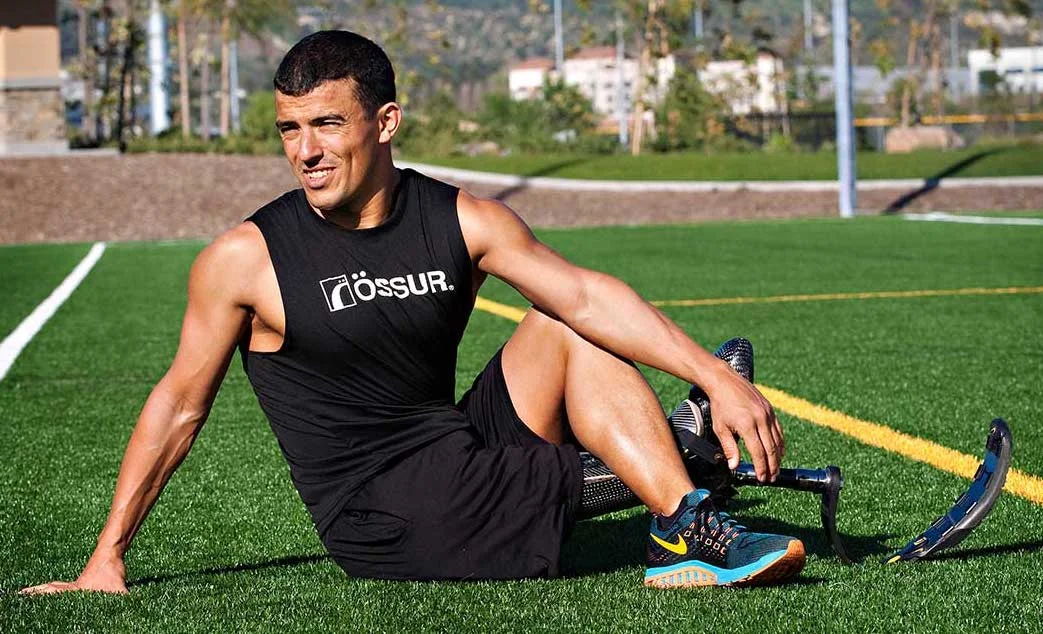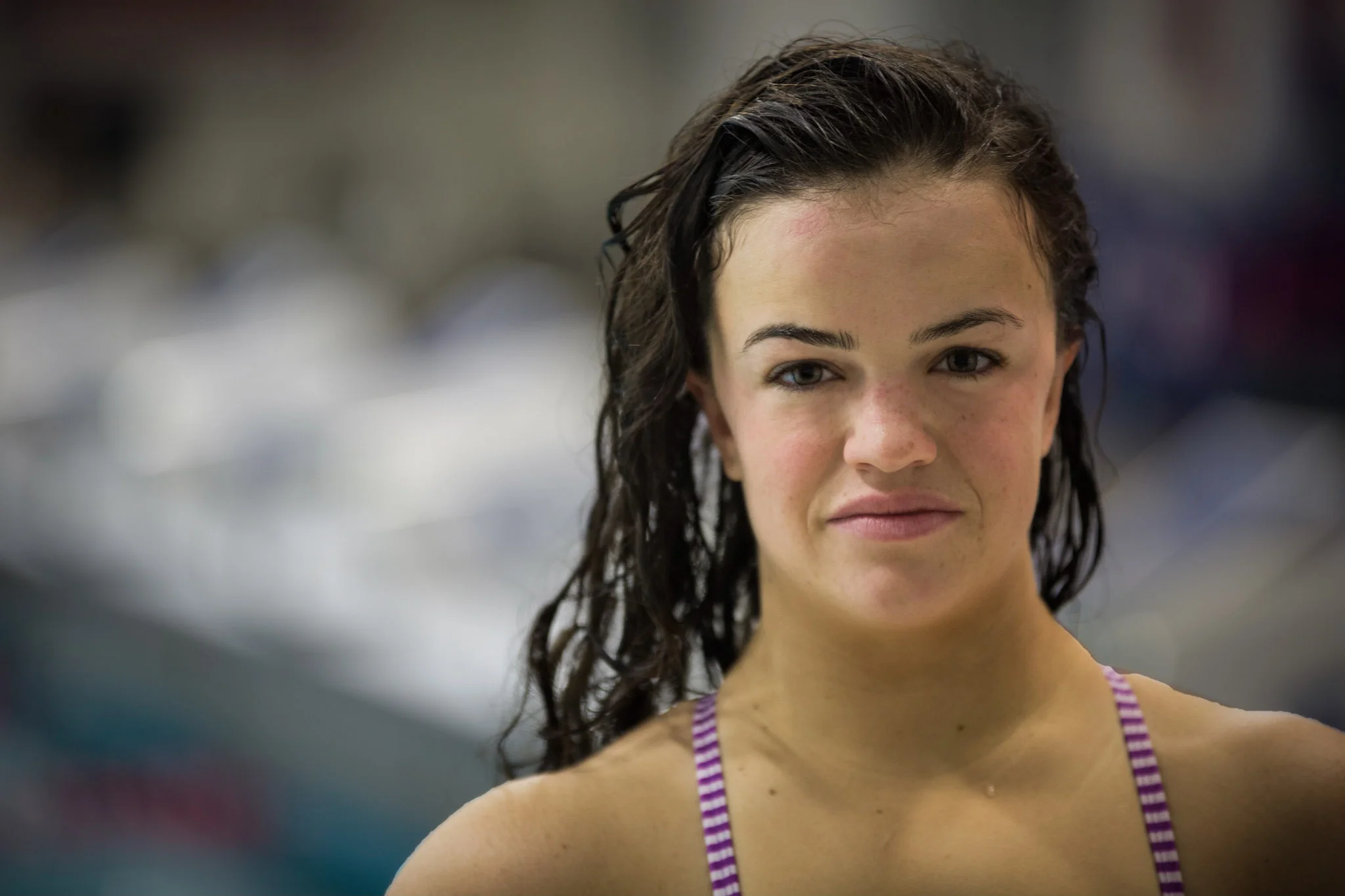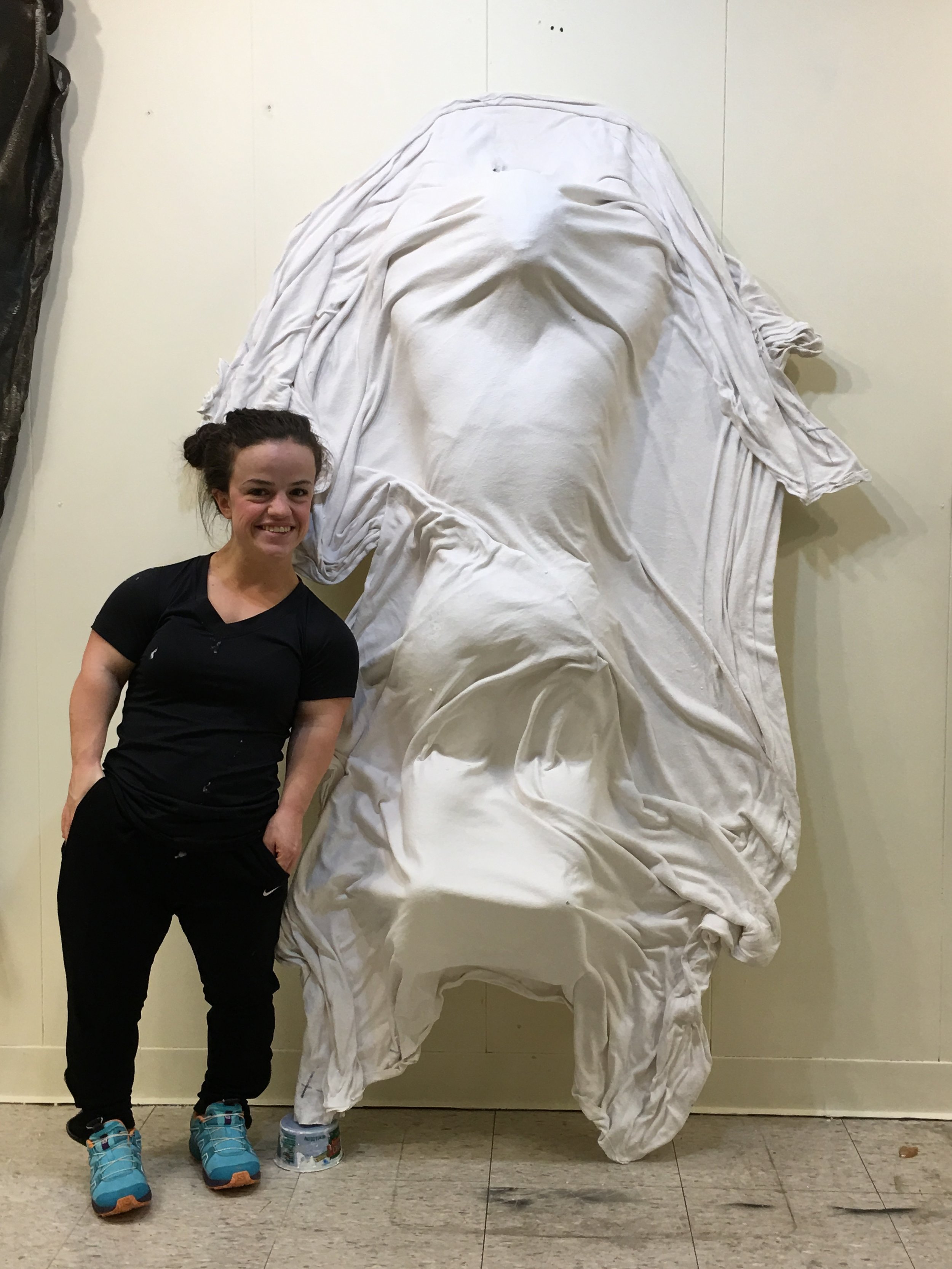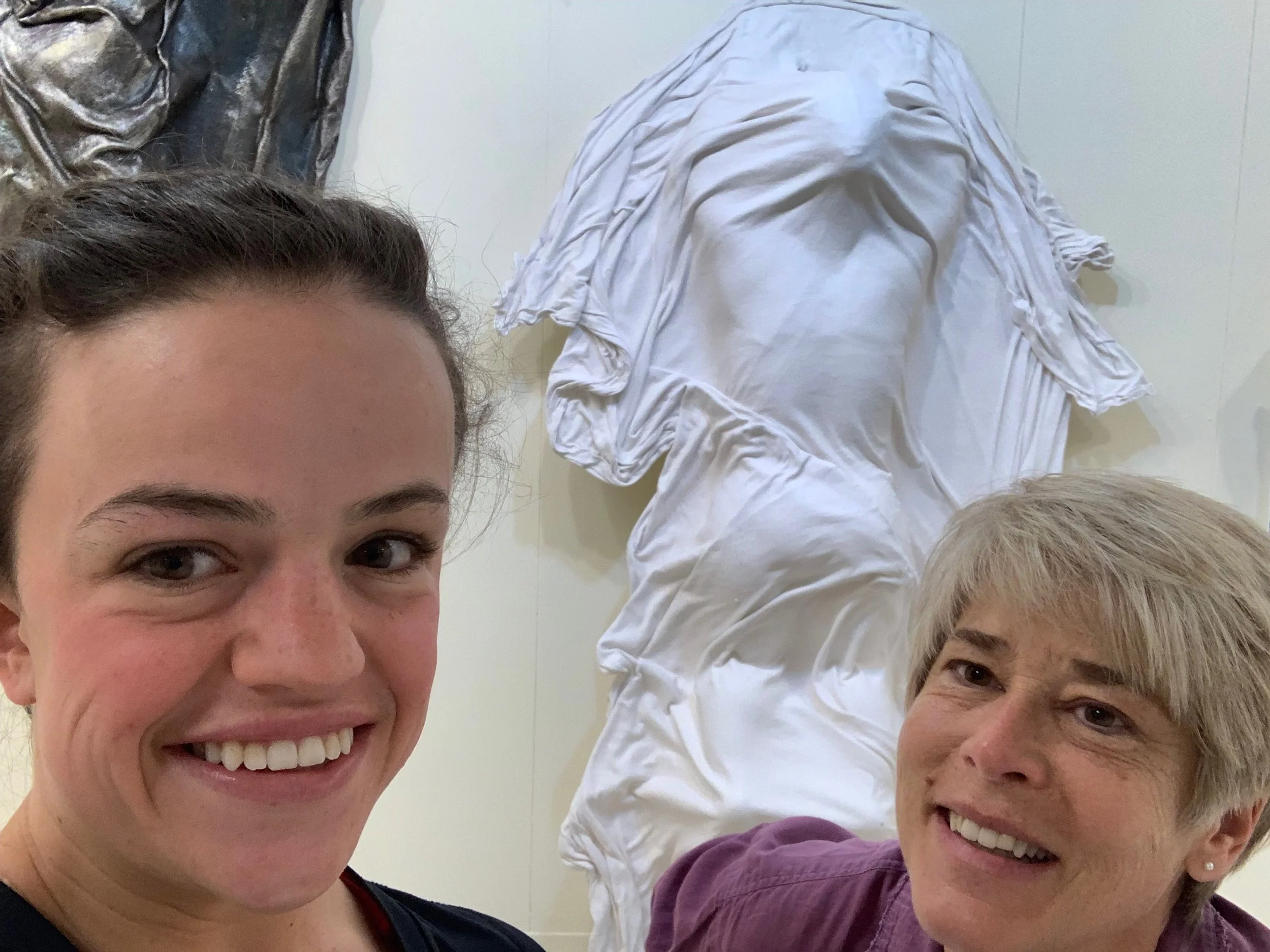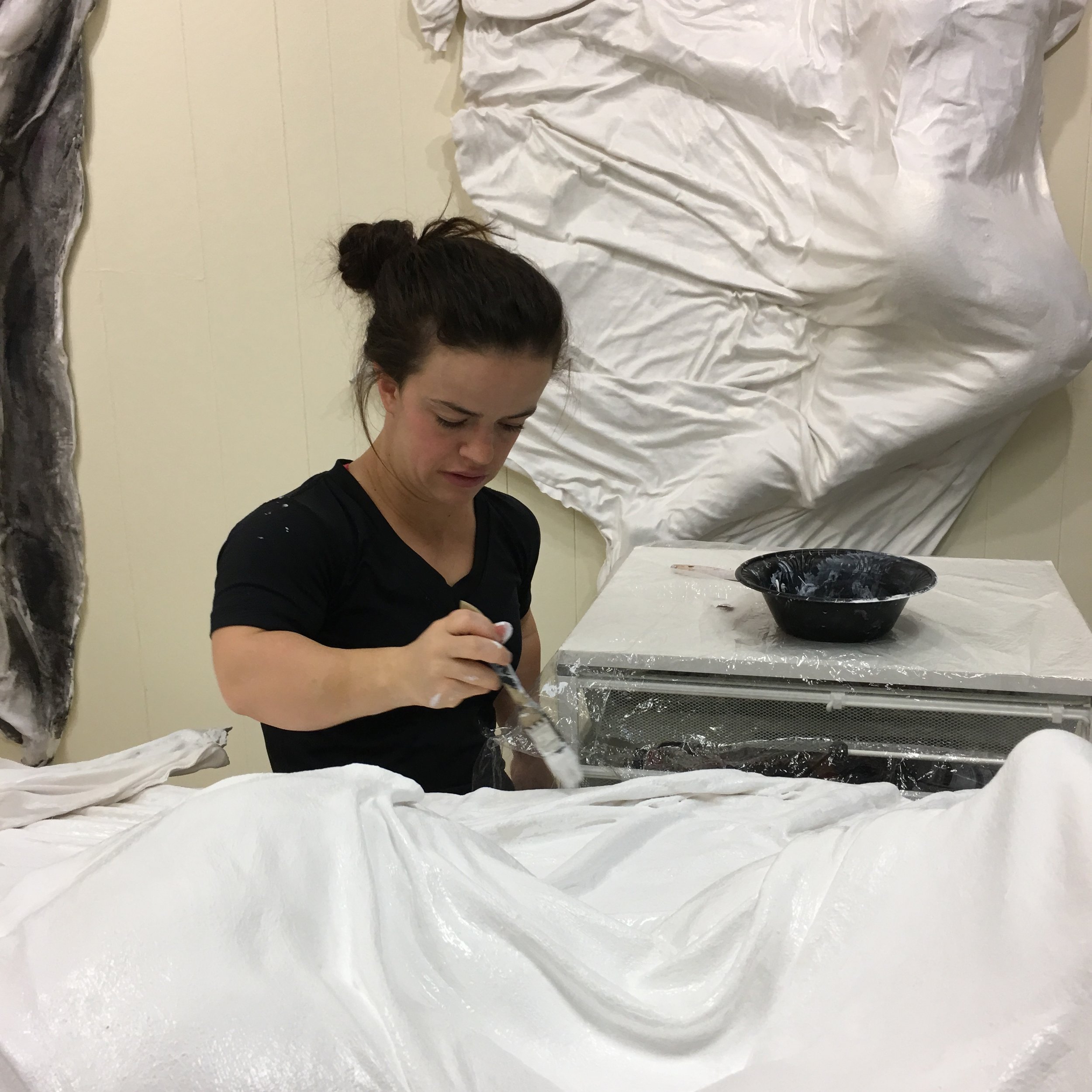Sculpting Paralympian Mohamed Lahna
/A triathlon is perhaps the most difficult physical challenge conceivable, but can you imagine doing consecutive distance swimming, cycling and running with only one leg?
While contemplating a third Paralympian to feature in my U.S. Olympic and Paralympic Visitor Center series in Colorado Springs, I imagined portraying an athlete who runs with a prosthetic blade. Other Paralympic athletes highly recommended their friend Mohamed Lahna, a champion triathlete who, after the triathlon was dropped from Paralympic competition, joined the U.S. Paralympic Cycling Team.
Mo was born in Casablanca, Morocco without a right femur or a leg connection to his hip. His tiny foot is where his knee should be. Because of Mo's condition, he was not allowed to participate in school sports. Although he felt sad and frustrated, this discouraging situation only fired his ambition to participate in sports at the highest level.
His first opportunity came at age 11 when Mo's father introduced him to a Moroccan Paralympic swimmer who mentored Mo. He did not know yet that he would one day swim the Strait of Gibraltar. At age 20, he was fitted with his first real prosthetic. Mo rode a bike for the first time at age 25 and crossed the Atlas Mountains on it the following year. At 27 he ran for the first time and competed in a marathon a few months later. In 2014, Mohamed was the first adaptive athlete to complete the Norseman Xtreme Triathlon. Mohamed has won four gold medals to date as well as 13 podium finishes and was ranked fourth in the world as a Paralympic triathlete. After winning the bronze medal for Morocco in the 2016 Rio Paralympic Games, Mo joined the USA Paralympic Triathlon Team so he could get the best training possible.
Photo credit: Genki Yamashita
Besides being super-athletic, highly competitive, and exceptionally friendly, Mohamed also excels at parenting. His two young boys accompanied him to my studio for his sculpture-forming session and the morning cycle training he did before he arrived. The boys calmly sat while munching on a hearty snack. Later, as they became bored, each curled up to nap in their chairs. They were far more patient than most adults! It was quite apparent to my assistant and me the deep, loving and understanding relationship between father and sons. Mo's boys acceptingly followed his simple instructions and requests delivered with a soft but firm voice and steady gaze.
Like my other Paralympic art models, Sophia Herzog and Brandon Lyons, I found Mo to be very outgoing, generous, humble and determined. His size and physique is that of a muscular Olympic gymnast. My only concern in creating a sculpture with Mo was my ability to incorporate his prosthetic running blade within the sculpture, without creating confusion for the viewer. But for Mo and me, it was definitely worth giving it our best effort. Happily, the uncommon form of Mo's blade turned out to be a fascinating feature, enticing the viewer and spurring curiosity. Mo is obviously running fast, yet there is something mechanical and strikingly different about his front leg.
Mo's sculpture is even more fascinating to walk around in person. You can see his powerful body and speed emerging from its surrounding sculpted landscape. Yet the artwork also expresses itself as a lively, colorful painting. I am delighted and gratified to know Mohamed Lahna and to share his story with you through my art. Let's cheer him on as he pursues Gold for his beloved adopted country, U.S.A., in Tokyo 2020!
You can learn more from Mohamed's website (watch the videos!), Team webpage and Triathlon Profile webpage.
Follow the conversation #SculptingMohamed #SculptingPara
Follow the athletes and their mission on Instagram @USParalympics


